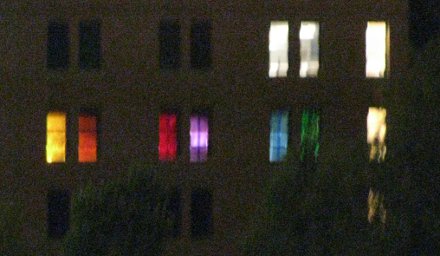| Sep 27, 2009
Why the HeyG20 Morse Code Art Project Was Prematurely Shutdown?

Many of you have asked us to go public with the real reasons for prematurely shutting down our intriguing HeyG20 Morse Code Project. By the end of this note, you will understand why Elliance hesitated in disclosing the real story behind this drama.
If you recall, the project was dreamt up as a creative forum that would allow concerned citizens of the world to voice their thoughts and opinions to the Leaders of the G20 Summit. We felt that the project would demonstrate Pittsburgh’s innovative spirit and create an endearing memory in the minds and hearts of the G-20 delegates, whom we knew would be under tight security in the Convention Center.
As we created the project, we became increasingly worried that the US Secret Service would force us to shut down the project, an eventuality for which we were prepared but wished to avoid. To prevent a premature shutdown, we imagined all the ways the project could potentially be hijacked by either unreasonable people or terrorists, and we began taking measures to ensure that wouldn’t happen.
We never received a call from the City, the Police, or the Secret Service. Surprisingly, we instead received a call from our landlord, who received a letter from our neighbor. The letter though professional in tone, was in fact a threat. The company that sent it took the position that allowing us to run the art project during the G-20 would increase the risk of causing damage for which the landlord and Elliance would have to assume liability. Their assumption was that the art installation would draw un-necessary attention to our building and activists could potentially end up using our building as a medium to draw media attention to their cause. The increase in risk to our building was something the company was unwilling to bear and would pass on to us.
On the surface, their argument seemed plausible. However, a deeper examination of the facts painted a different picture.
First, I believe that Elliance, a relatively unknown company, faced deeper jeopardy because we share the building with a high profile tenant whose name is emblazoned on our building. The company and the Wall Street firms it serves are at the epicenter of much of our economy’s discontent. I would argue that because of these factors, our neighbor posed Elliance a greater danger than we posed them, even if our Morse Code project was not operational.
Second, if drawing attention to our building was indeed a serious concern, the company could have gone dark with its sign. On the contrary, just a week before G-20, it replaced defective light bulbs in its sign, ensuring its name would be visible brightly to the G-20 delegates, and to the very activists they so deeply fear.
Third, as two tenants in a building, we could have arrived at a mutually satisfactory balance of self-expression and free speech. Instead of a neighborly dialog, we were served up a draconian threat through an intermediary.
In the end, Elliance decided to back down because we did not want to engage in a legal skirmish. Sadly everyone lost. The young creators of the art project were demoralized; the art project could not demonstrate the truly innovative spirit of Pittsburgh talent; the G-20 delegates and global reporters were deprived of carrying an intriguing Pittsburgh memory, in an otherwise deserted city.
The experience itself is another illustration of the points I made in my recent Op-ed article in the Pittsburgh Post-Gazette, which argued that Pittsburgh has much work to do to truly join the ranks of a G-20 city. It needs to encourage grassroots innovation to flourish, transform its thinking from being risk-averse to welcoming creative engagement with new ideas, and not be afraid to open its arms and embrace a future that may be unknown but that has so much more promise if we’re not afraid of it.
